Can tennis break through in India?
- Published
Indian tennis successes so far have tended to come in doubles
India and tennis may not be two words you would automatically put together, but the excitement and razzmatazz here in Delhi have shown the sport is ready to launch a challenge to other attractions such as cricket and football.
From beating the dhol (traditional Indian drums) to ear-splitting music with a DJ, there was plenty of off-court entertainment for tennis fans attending the inaugural International Premier Tennis League (IPTL).
But this is not a regular championship.
With brightly coloured uniforms, laser light shows, Bollywood dance numbers and, more importantly, a quick-fire format, the five-set match ends in roughly three hours.
Watching legends Roger Federer and Pete Sampras live was a first for Indian fans. The country is not in the Grand Slam network. But the organisers are hoping it will win millions of new fans to the game of tennis.
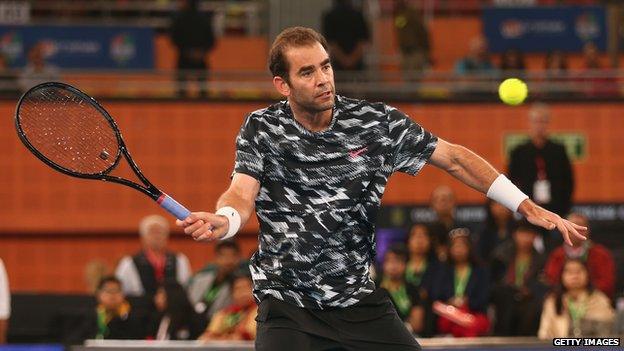
Pete Sampras on court at the International Premier Tennis League in Delhi
Indeed, there's no lack of support. A recent Facebook study revealed that after the US, India has the second highest number of tennis fans in the world.
And on the ground, with more than 10,000 spectators in the stadium, there was a strong show of support for the first IPTL. Tickets sold out online within minutes.
The big selling point of this new format game is that it's a franchise-based tournament with a mix of celebrity team owners, offering a chance to see current and former international stars play together.
Fun for Federer
But what do players make of it? Roger Federer says it's not going to replace how current big names play the tour.
"But it definitely has a place in our sport," says the Swiss star. "To have more interaction, more fun, different rules, you know you bend it, customise it, so it works for everybody involved."
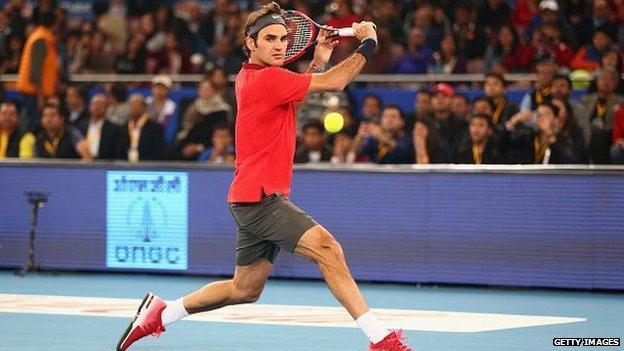
Roger Federer says there's a place in the tennis world for these new tournaments
He says while it's a very interesting concept, he likes "the idea of it being in a part of the world where you don't see that many tournaments after all".
He adds: "It's a really fascinating part of the world, for us to come here and those who want to play in the off-season can do it, and those who don't want to do it don't have to."
Back at the stadium, pundits say they expect watching Federer in action to inspire a generation of young tennis players.
Unlike in cricket - where Indians are fiercely nationalistic - sports like tennis are popular irrespective of the player's nationality. So Roger Federer is treated like a rock star here.
Child's play
But away from the stars, it's a different story.
Tennis, like most other sports, has to vie for attention in cricket-obsessed India.
Aspiring players face huge challenges from finding good courts to the right coaches. And even when parents find academies, they can start at as little as $10 (6.65) to participate but some cost up to $100 an hour for private coaching.
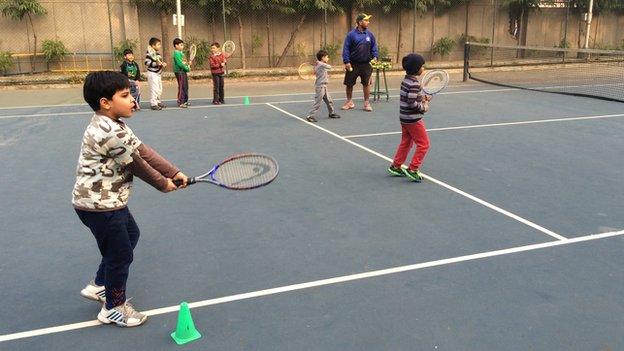
Private coaching for children can set parents back a small fortune
.jpg)
Children taking tips from their tennis coach
To make it a career, parents have to be ready to spend serious money, including on travel and hotel expenses.
Delhi resident Jahnavi Mehra says her 12-year-old son Rohan plays tennis at a national level. So she spends a lot of time and effort making sure he is sent to the right tennis camps and is able to travel to various championships around the country.
Her younger son Dhruv is six and also plays.
It's getting increasingly tough to make sure both boys get enough opportunities, she says.
But the bigger problem is for parents who don't have this kind of money or access to events. So in a way, it is an elite sport in India.
While there are sports scholarships, they are limited to very few cities and not everyone can get them. But Gayatri Singh, whose son Ishaan plays, feels things are beginning to change for the better.
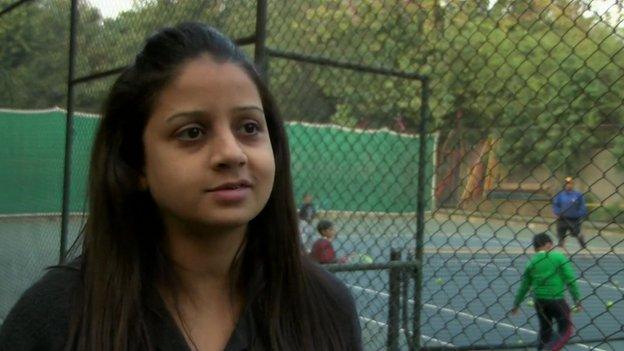
Tennis mum Gayatri Singh says it's getting easier for children in India to play tennis
"Things have drastically changed in India," she says.
"If you want to play tennis here, there is now enough in terms of infrastructure, courts, coaches. There are so many children playing, so you don't feel like you're the only one. You can make it big - if you pursue it the sky is the limit."
But the bigger picture is less rosy. The country's tennis authorities have been embroiled in numerous controversies over recent years, including player selection issues and accusations of favouritism.
So consistent international success has been elusive and the best performances have been largely restricted to doubles events.
But for top Indian players, the launch of three private leagues is great economic news as its offers them a chance to earn a lot more money.
New opportunities
Rohan Bopanna started young and has done well in various ATP World Tour events in doubles competitions. The 34-year-old thinks the leagues provide an opportunity for players like him to play with imported talent and improve their own skill levels.
So with things improving for the sport, can tennis be financially feasible as a career for young Indians?
Bopanna agrees that the situation has improved compared to when he started playing, but says that India still has "a long way to go to catch Europe or the US".
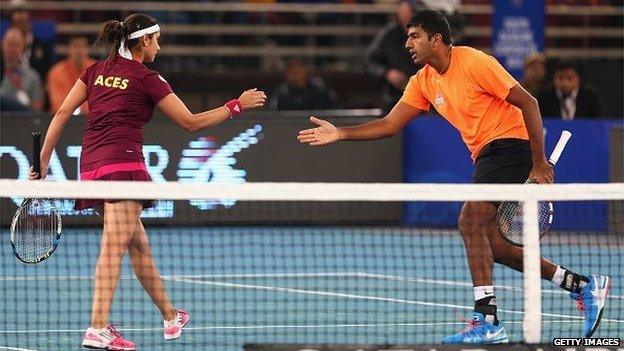
Rohan Bopanna and mixed doubles partner Sania Mirza played for the Micromax India Aces in the IPTL
The difficulty for youngsters choosing tennis as a fledgling career is that India does not have enough entry-level tournaments that offer substantial cash prizes.
So financing for a full-time tennis player is hard. Bopanna says he is grateful for the support of his parents, whom he acknowledges had a tough time helping him pay his way.
"Without them I wouldn't even have gotten here. They made a lot of sacrifices," he says. "So we definitely need a lot of corporates to come out and help sportsmen in India, that's the only way sports will grow in India."
Critics often say players in India make it big because of their individual effort, and that there is no system in place to produce champions.
However, the government is taking notice of the increased interest in sports like tennis, and has increased the budget allocation to develop sports by nearly 50%.
If sport federations and business corporations get behind the sport in the same way as the glitzy private leagues, then it will definitely be advantage tennis in India.